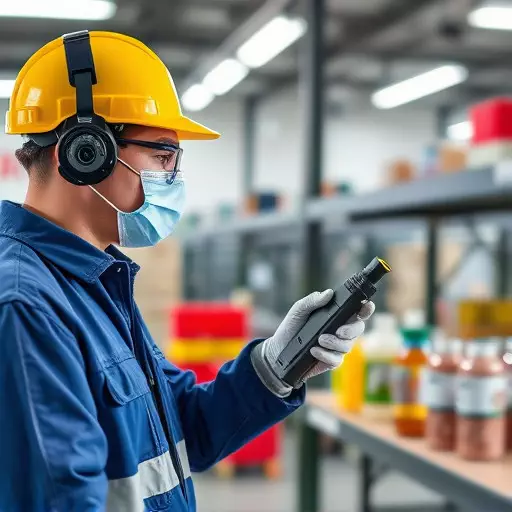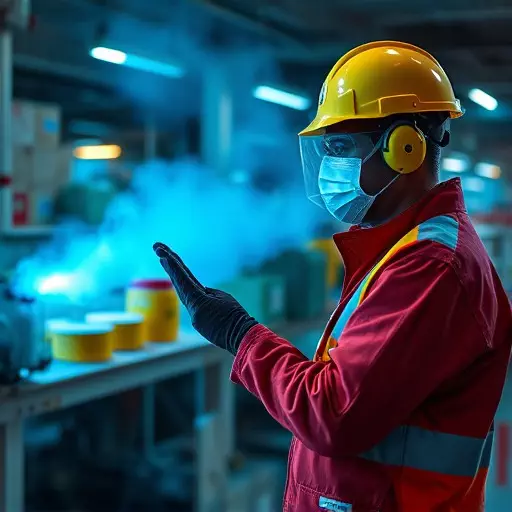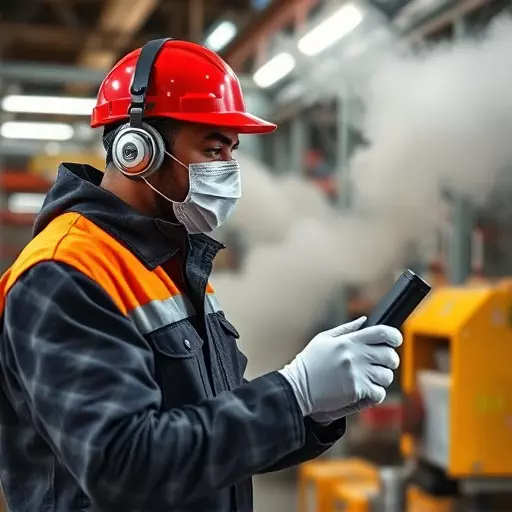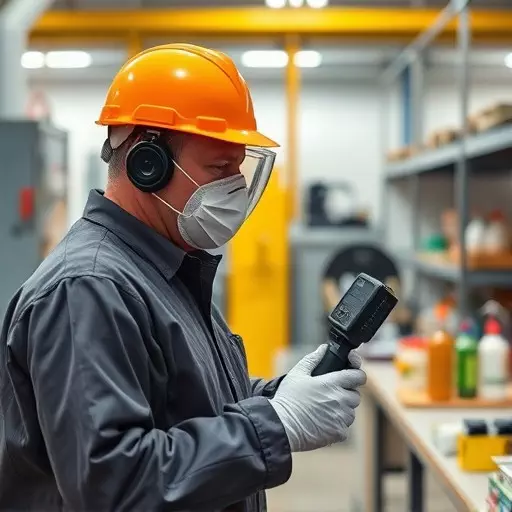In today's digital era, advanced technologies powered by IoT are enhancing workplace safety through real-time data collection and precise analysis of hazardous substances. Employee exposure monitoring, integrated with workplace air quality testing, allows organizations to proactively identify and mitigate risks in real-time. By regularly assessing air quality and tracking employee exposure, companies can protect workers from harmful environments, maintain a safer work setting, and implement targeted interventions based on data insights.
- Employee Exposure Monitoring: Tools for Real-Time Tracking
- Workplace Air Quality Testing: Digital Solutions for Safe Environments
- Hazardous Substance Monitoring: Ensuring Safety with Advanced Technology
- Integrating Data: Creating a Comprehensive Workplace Safety System
- Training and Education: Empowering Employees with Digital Knowledge
Employee Exposure Monitoring: Tools for Real-Time Tracking

Employee Exposure Monitoring plays a pivotal role in enhancing workplace safety, especially when it comes to hazardous substances and indoor air quality. Advanced digital tools enable real-time tracking and data collection, providing employers with valuable insights into potential risks. These systems can detect and monitor exposure levels to various chemicals, gases, or biological agents, ensuring compliance with safety regulations.
Through the integration of sensors and wearable devices, workplace air quality testing becomes more accessible and efficient. Employees’ breathing zones can be continuously monitored, alerting authorities to any hazardous substance monitoring breaches. This proactive approach allows for immediate action, implementing necessary control measures to safeguard workers’ health and well-being.
Workplace Air Quality Testing: Digital Solutions for Safe Environments

Hazardous Substance Monitoring: Ensuring Safety with Advanced Technology

In today’s digital era, advanced technology plays a pivotal role in enhancing workplace safety, especially when it comes to hazardous substance monitoring. Traditional methods of employee exposure monitoring often relied on manual sampling and subjective assessments, leaving room for error and delayed results. However, modern solutions revolutionize this process through real-time data collection and precise analysis. Sensors and wearables equipped with IoT capabilities can continuously monitor air quality and detect even trace amounts of hazardous materials, ensuring immediate action is taken to mitigate risks.
By implementing sophisticated digital tools, companies can proactively manage potential dangers. These technologies enable efficient workplace air quality testing, providing comprehensive insights into environmental hazards. From chemical vapors to airborne particles, these advanced monitoring systems offer a multi-layered defense against employee exposure. Real-time alerts and data visualization dashboards empower safety managers to make informed decisions, quickly address issues, and foster a safer work environment.
Integrating Data: Creating a Comprehensive Workplace Safety System

In today’s digital era, integrating data is a game-changer for workplace safety. By seamlessly connecting employee exposure monitoring, workplace air quality testing, and hazardous substance monitoring systems, organizations can create a comprehensive safety network. This unified approach allows for real-time tracking of potential risks, enabling proactive measures to protect workers from harmful environments.
Data integration facilitates the identification of patterns and trends that might otherwise go unnoticed. For instance, combining exposure monitoring data with air quality testing results can reveal correlations between specific tasks and respiratory issues among employees. Armed with this information, companies can implement targeted interventions, such as enhanced ventilation systems or specialized protective equipment, to mitigate risks effectively.
Training and Education: Empowering Employees with Digital Knowledge



